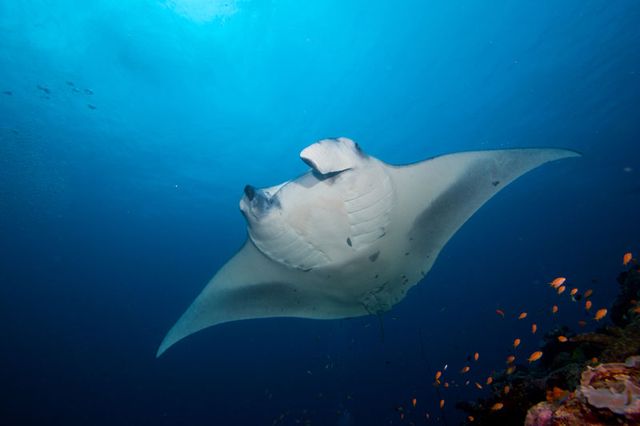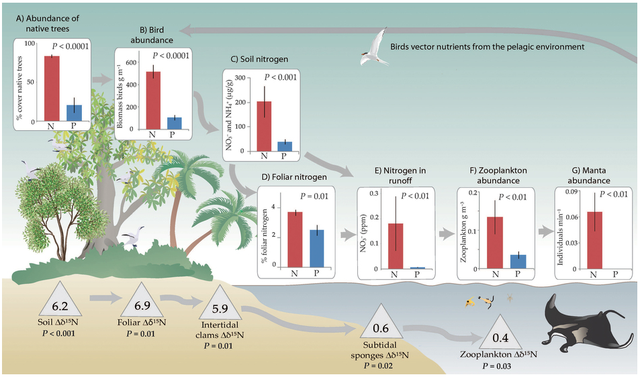
Most people are familiar with Aldo Leopold's thoughts on cascading environmental damage from . When wolves were hunted out of forests in the American Southwest, deer increased, the deer ate more tree saplings, there was a dearth of new trees, and the deer population went into a boom and bust cycle. When Leopold was younger and working for the government, he thought killing the wolves would lead to more game and a better environment. As an older man looking back at his career, he understood what the loss of wolves meant to the ecosystem. More than a half century later, it's clear that the loss of wolves led to other issues, such as the .
A new study published in the May 17 issue of shows how changes in coastal forests can affect the abundance of fish offshore. In the waters of Palmyra Atoll, a series of remote islands and reefs located in the middle of the Pacific, there are fewer manta rays using coastal areas next to land where native trees have been replaced with palm trees. The loss of the marine giants has to do with the change in vegetation, a decrease in birds, and a decrease in fertilizer.
The small coral islets of Palmyra Atoll are mostly pristine, though humans have changed the flora and fauna somewhat. One way they have changed the islands is by introducing non-native palm trees to the region. Seabird densities decrease by a factor of five in palm tree forests. In the native forests, there are a lot more birds, and, as a result, there is a lot more bird crap. Nitrogen in the soil is much higher in these regions, and runoff from the native forests carries a load that is 25 times higher in nitrogenous components to the ocean. In short, a lot of the guano makes its way into the coastal waters. This in turn may boost phytoplankton activity. Scientists found that zooplankton that feed on phytoplanton had a higher biomass in coastal areas near native forests, and many species grew larger. Manta rays that feed on zooplankton were viewed more in coastal areas near native forests, and three manta rays tagged with acoustic pingers overlapped in these regions. Manta rays were seen much less in the coastal areas near palm forests, and the three tagged manta rays never overlapped in coastal areas near the palm forests.

The takeaway is that a change in coastal vegetation can have a big effect on the fish that choose to visit the waters nearby. It's a reality that may factor into what vegetation people choose to plant in coastal areas near abundant sea life, especially if that sea life is a draw for tourists.
What does all this have to do with adventure? Nothing, unless you think that being able to get in the water with a school of giant rays feeding in swooping circles all around you adds something to a tropical snorkel trip.
—Joe Spring